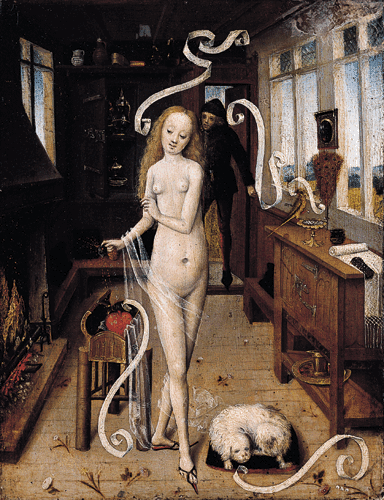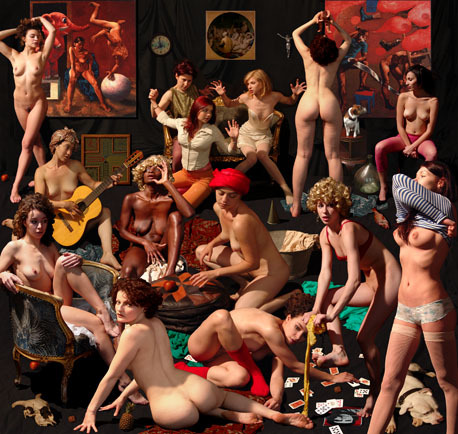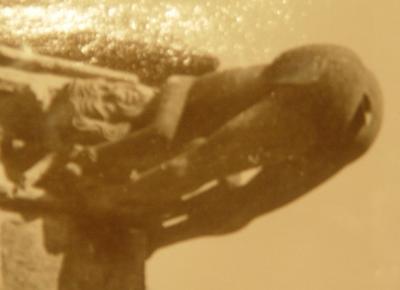
Liebeszauber (c. 1470, Magic of Love) is an Early Netherlandish painting depicting a nude woman casting a love spell over a young man who is about to enter her room. The painting is housed at the Leipzig, Museum der Künste. The woman has a tight pelvis, wide waist circumference and small breasts.
See love magic, anonymous masters, love spells, female body shape and Early Netherlandish painting.
More love magic in art and literature:
“A wild centaur named Nessus attempted to kidnap Deianira, but she was rescued by Heracles, who shot the centaur with a poisoned arrow. As he lay dying, Nessus lied to Deianira, telling her that a mixture of olive oil with the semen that he had dropped on the ground and his heart’s blood would ensure that Heracles would never again be unfaithful. ”
“Tristan goes to Ireland to bring back the fair Iseult for his uncle King Mark to marry. Along the way, they accidentally ingest a love potion that causes the pair to fall madly in love. In the “courtly” version, the potion’s effects last for a lifetime; in the “common” versions, however, the potion’s effects wane after three years.
“The opening of this comic opera finds Nemorino, a poor peasant, in love with Adina, a beautiful landowner, who torments Nemorino with her indifference. When Nemorino hears Adina reading to her workers the story of Tristan and Isolde, he is convinced that a magic potion will gain Adina’s love for him. The traveling quack salesman, Dulcamara arrives, Nemorino innocently asks Dulcamara if he has anything like Isolde’s love potion. Dulcamara says he does, selling it to Nemorino at a price matching the contents of Nemorino’s pockets. Unknown to Nemorino, the bottle contains only wine. ”
 In the history of 20th century erotica, Walter Sickert kicks off the era with a series of oils known as the The Camden Town Nudes.
In the history of 20th century erotica, Walter Sickert kicks off the era with a series of oils known as the The Camden Town Nudes.









